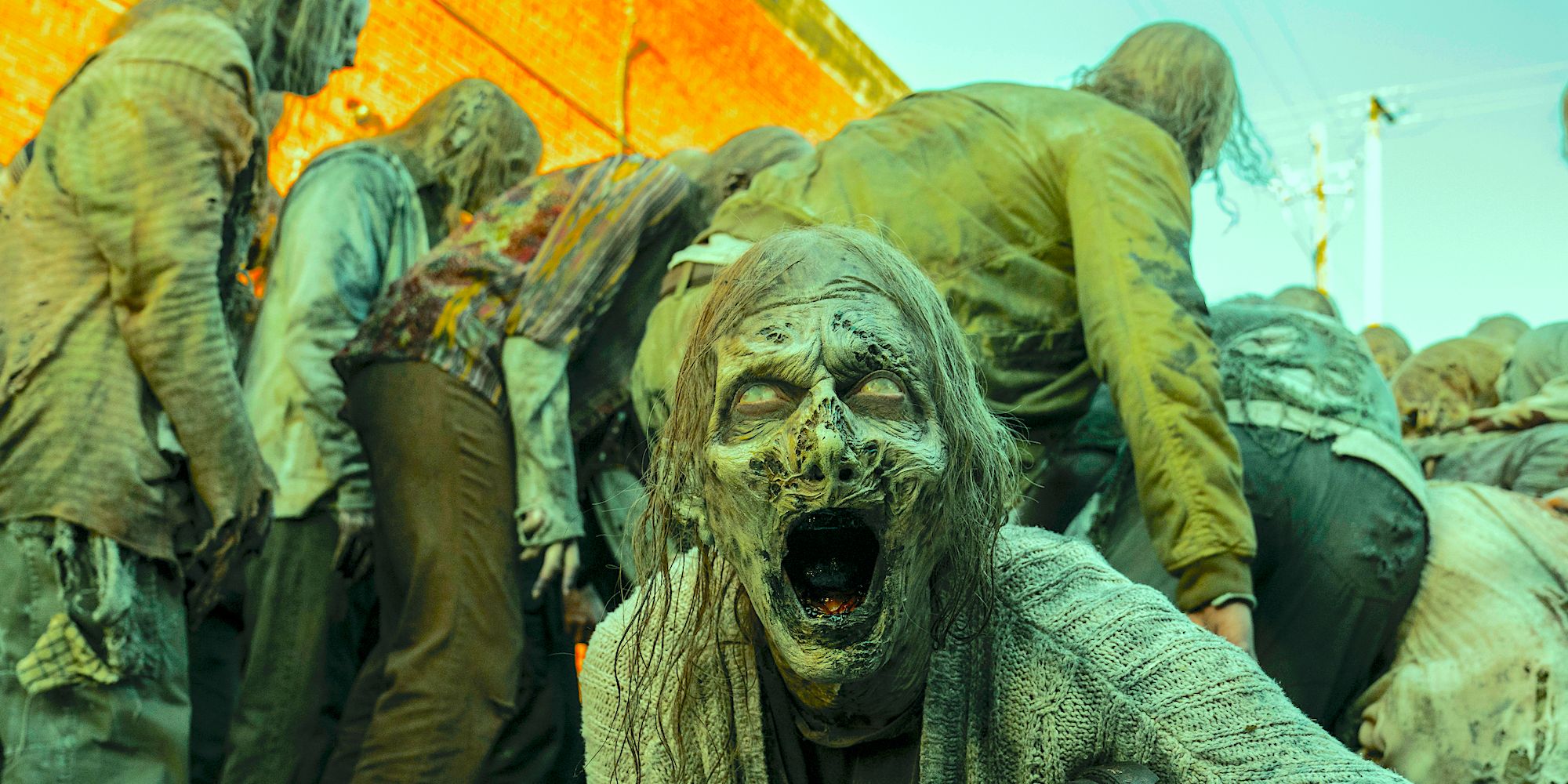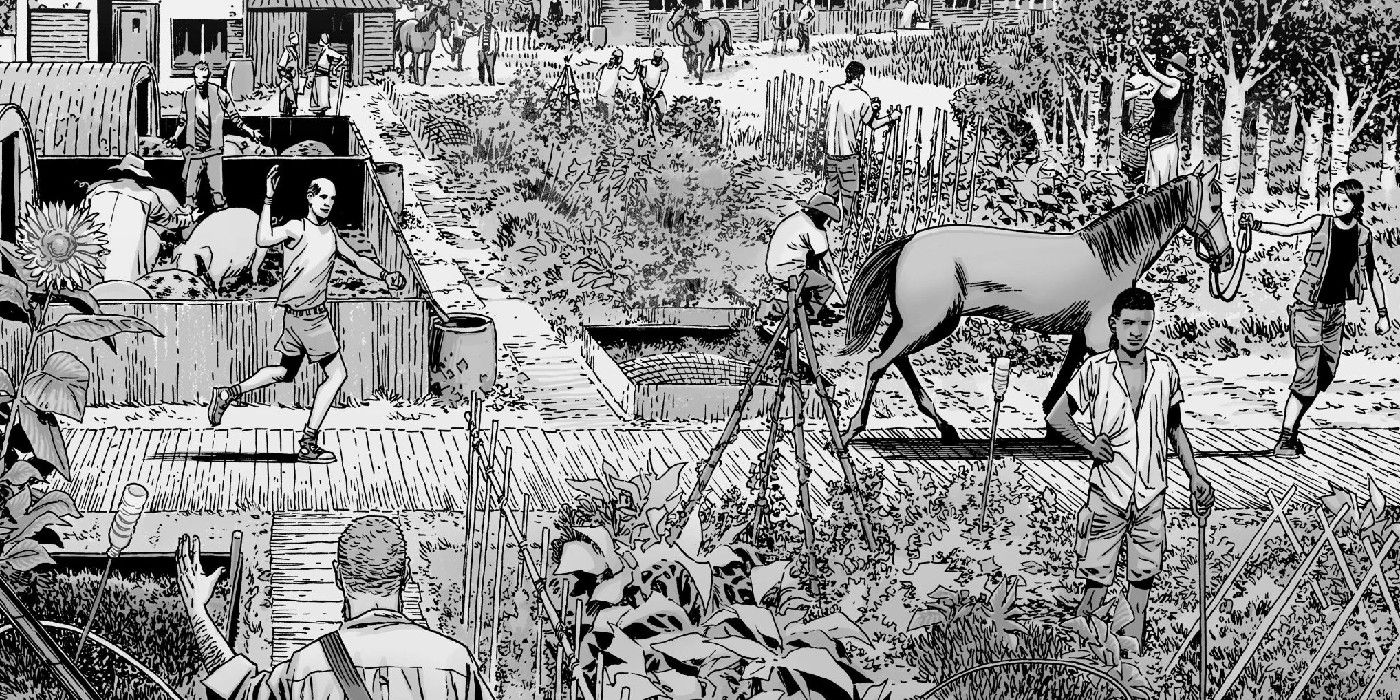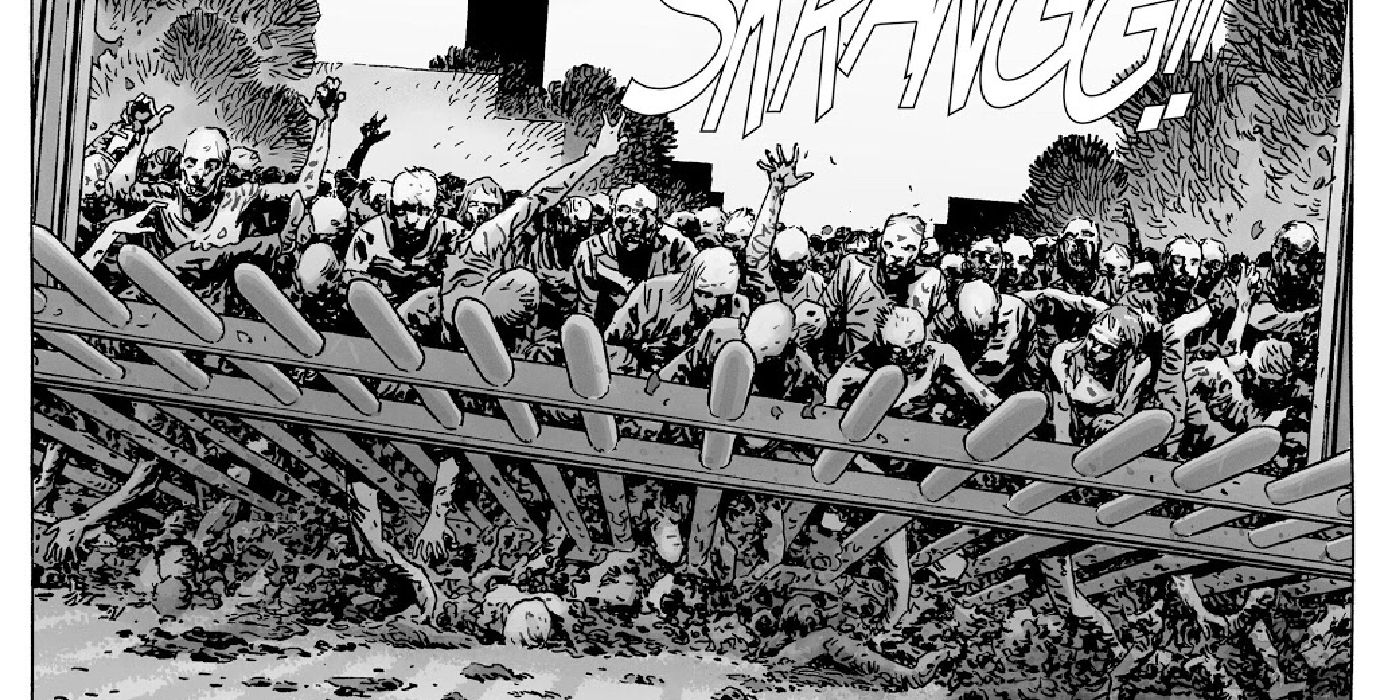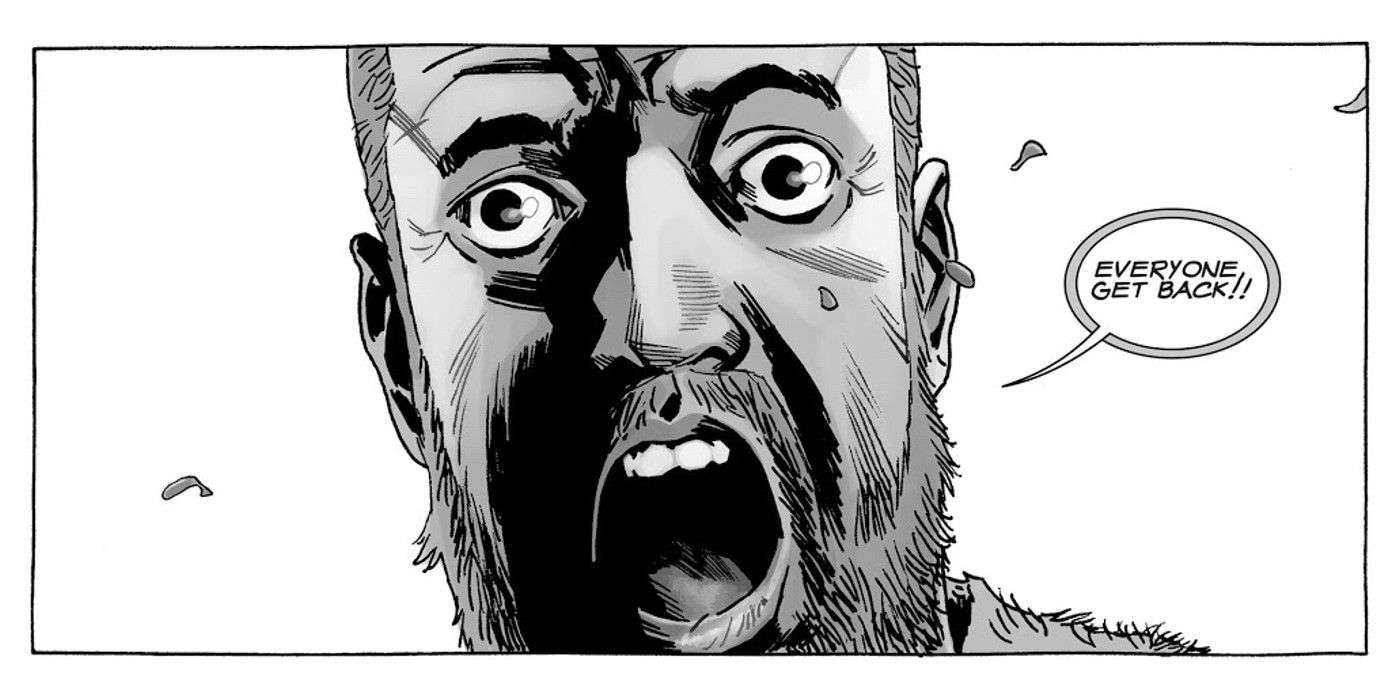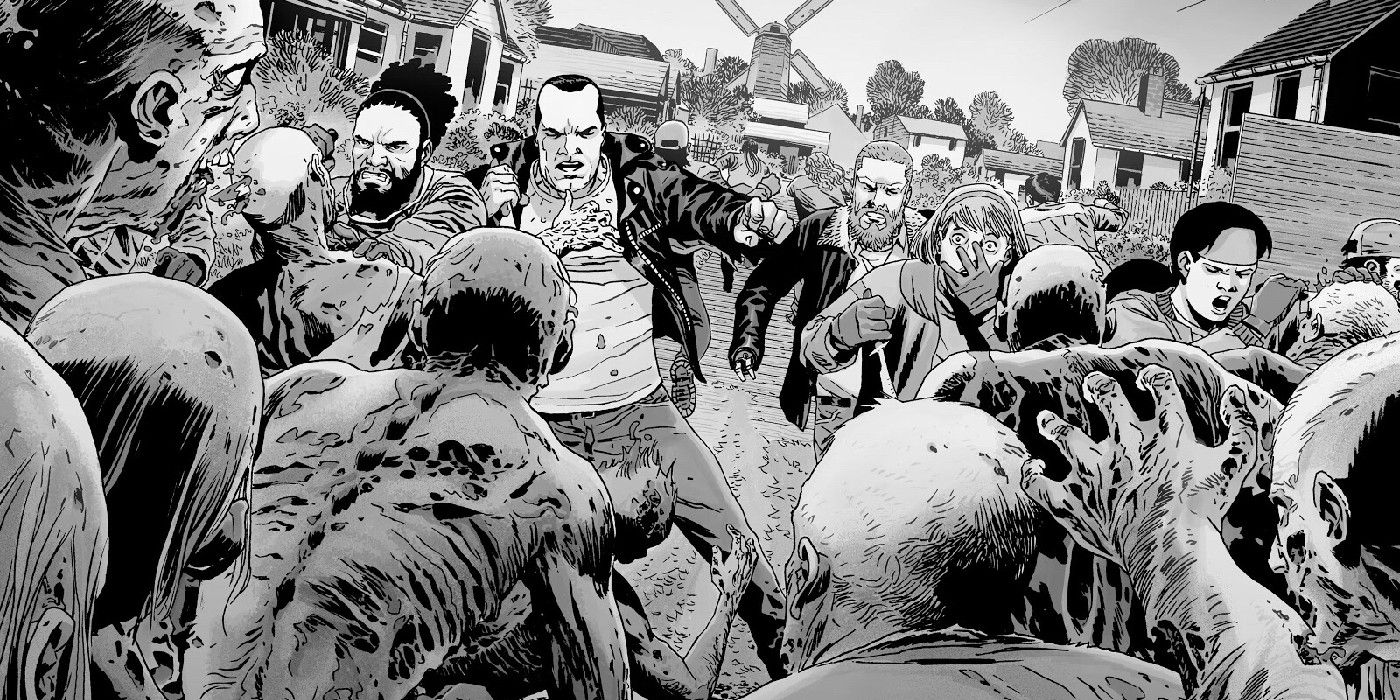Walking Dead’s creator has revealed his original plan for the franchise’s ending – a twist that would have totally changed the series’ meaning.
Robert Kirkman – the creator of mega-hit horror franchise The Walking Dead – just revealed how he originally planned for the franchise to end, and it would have changed the entire meaning of Rick Grimes’ fight to survive the undead apocalypse. In a fascinating reveal, one detail of the original ending actually lived on, but with a very different meaning.
Walking Dead star Andrew Lincoln knew how the franchise was meant to end, with Kirkman noting he was “nice enough to pretend it was cool.”
In The Walking Dead Deluxe #84 – a rerelease of Robert Kirkman, Charlie Adlard and Tony Moore’s original series with colors from Dave McCaig – Kirkman reveals that this issue marked the original point in the story where he’d intended to end the franchise. Conceived while writing issue #50, Kirkman planned to depict an inspirational speech from Rick Grimes before jumping ahead decades, transitioning to a statue of Rick which shows he became a folk hero to humanity, and helped them reach a point of stable civilization once again. However, Kirkman would then have had a zombie walk past the statue, pulling back to show Alexandria in ruins, suggesting thatdespite Rick’s temporary victory, humanity still eventually fell to the undead.
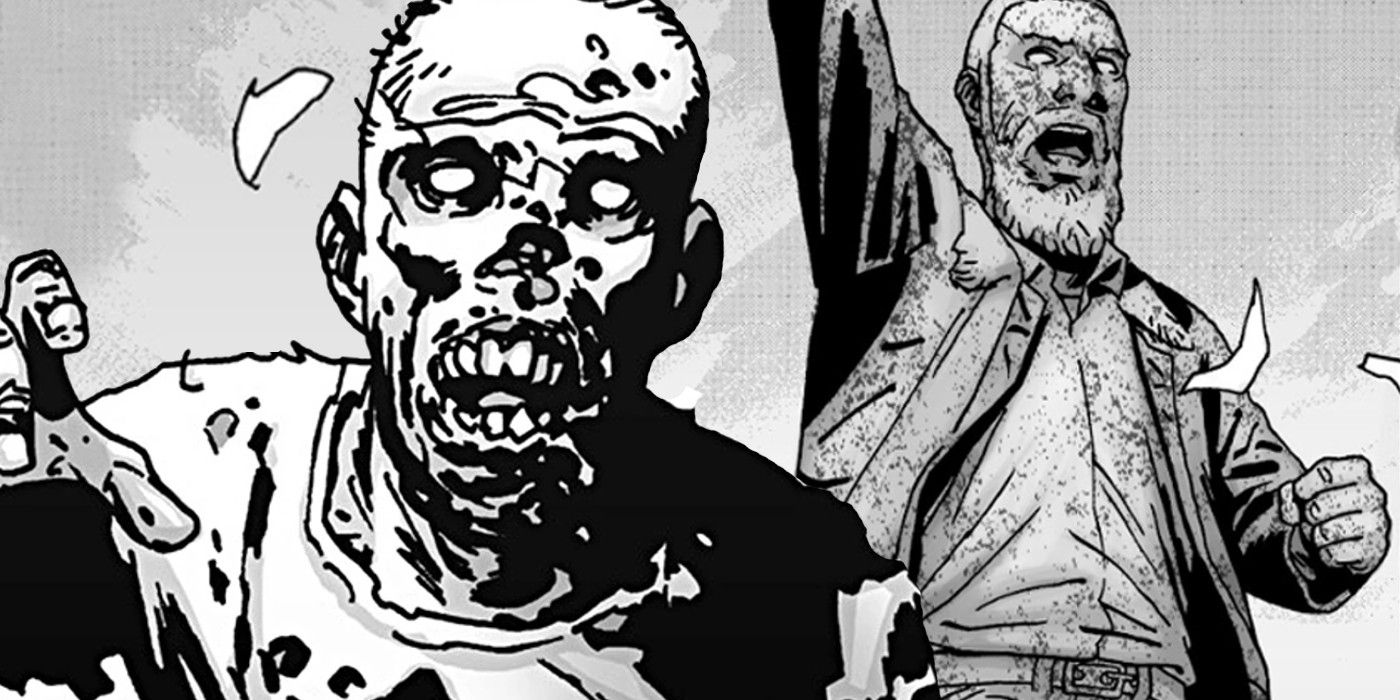
In the creator notes for the issue, Kirkman explains:
So, the basic gist is that this massive zombie attack would have happened in Alexandria, Carl wouldn’t have been shot, but everyone would have come together, as they did in this issue, and overcame the zombies. Rick’s hopeful speech to Carl at the end of this issue would have instead been a rousing speech about hope for the future, and how they were going to put down roots in Alexandria and rebuild civilization there, etc. As the speech winded down, we end on a cool shot of Rick standing up in front of the crowd, then you’d turn the page and Rick would be in the same pose, but now he’s a statue commemorating that speech. An indeterminate amount of time would have passed but the statue would’ve looked old and worn, and we’d start zooming away from the statue, as we got further and further away, we’d see that Alexandria was in ruins, long abandoned and the final image as we cut away, ending the series, was a zombie casually walking by.
Walking Dead Was Meant to End with Humanity Falling to the Undead
Rick Became a Hero, But It Didn’t Last
Kirkman calls the planned ending “bleak, sad… possibly terrible.” Typical to the comic series’ sensibilities – where the survivors never find out what caused the zombie apocalypse – the moment wouldn’t have offered absolute, definitive proof that none of humanity survived, but that was very much the implication. Kirkman clarifies:
The idea was that Alexandria was successful enough for Rick to live out his life there and have a statue erected in his honor, but ultimately… the city fell and the scourge of the zombie apocalypse just… continued on. So, we’d leave readers with the idea that no matter what people did… the zombies win. I know, right?
Kirkman also clarifies that one of the benefits of the ending was its ability to act as a floating concept which could believably follow any speech by Rick, allowing the series to keep rolling but with a clear ending as the goal when the time eventually came. “A speech that transitions to a statue of Rick?” Kirkman comments, “Eh… I could do that any time.” It was this fact which saved fans from such a bleak ending – Kirkman says he kept pushing the ending back to tell more of Rick’s story, gradually realizing that the death of humanity wasn’t a satisfying ending to the story he was telling.
